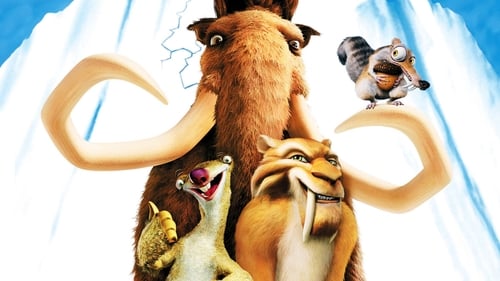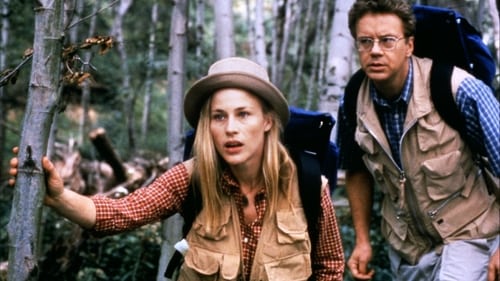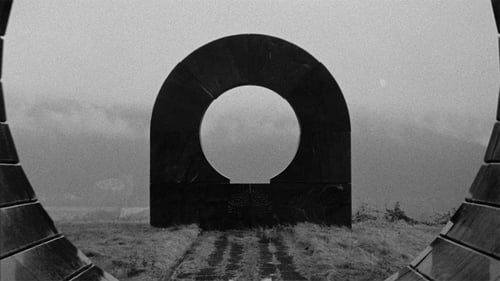Vývoj člověka II. (1954)
장르 : 다큐멘터리
상영시간 : 0분
연출 : Fedor Kaucký
각본 : Fedor Kaucký
시놉시스

거대한 빙하가 온 지구의 표면을 뒤덮기 시작하던 때, 모든 동물들은 따뜻한 남쪽나라로 이동을 시작하지만, 염세적인 털북숭이 맘모스 만프레드만은 유별나게 북쪽으로 향한다. 만프레드는 우연히 떠버리 나무늘보 시드를 만나고, 인간의 아이 로샨을 발견한 뒤 가족을 찾아주기로 한다. 이들은 여행길에 검치 호랑이 디에고와 동행하게 되지만, 디에고는 비밀스런 임무를 맡고 있는 처지다. 바로 호랑이 무리의 두목으로부터 끼니를 때울 만한 인간의 아이를 납치해오라는 명령을 받은 것이다. 과연 로샨은 무사히 가족의 품으로 돌아갈 수 있을까?

지구 시각 2673년 3월 26일, 삭막해진 세상에 모든 미련을 버린 테일러 일행을 태운 우주선이 1년 6개월만에 어느 행성의 바다에 불시착한다. 그들은 이곳이 지구에서 320광년 떨어져 있고, 오리온좌의 태양 주위를 돌고 있는 어느 이름 모를 행성으로 추측한다. 행성의 생명체 유무를 위해 사막 위의 긴나긴 탐사 여행을 하던 그들은 곧 원시인의 무리를 발견하지만, 곧 말을 타고 총을 쏘아대는 원숭이들 무리에 쫓기게 된다. 이 행성은 바로 원숭이들의 지배 하에 있었고, 인간의 모습과 거의 비슷한 원시인들은 야생 동물처럼 살고 있었다.

12세 소녀 라일라는 온몸을 뒤덮기 시작한 털 때문에 정상적인 생활을 할 수 없다. 숲속으로 들어가 자유로운 야생의 삶을 살기도 하지만 독수공방의 고통까지 감내하기엔 역부족. 결국 밤에는 사랑을 나누고 아침이면 면도를 하는 편법으로 정상적인 남자와 짝짓기에 성공한다. 그러나 하필이면 털난 짐승을 경멸하고 학대하는 과학자일 줄이야. 우연히 면도하는 라일라의 모습을 목격한 남자, 마침 산 속에서 마주친 또다른 미개인 남자. 이제 사건은 복잡하게 꼬여만 가는데..

다급한 목소리로 말하는 여성의 사실적인 내레이션과 절묘한 기악곡의 선율이 이어지는 가운데, 놀라운 흑백 화면 속에서 거대한 건축 구조물이 등장한다. 목소리의 주인공은 20억년 후에서 온 여성으로, 앞으로 다가올 인류 사망과 멸종을 경고하고, 그런 종말을 피하기 위해 우리가 할 수 있는 일이 무엇인지 경고한다.

40, 000 years ago the steppes of Eurasia were home to our closest human relative, the Neanderthals. Recent genetic and archaeological discoveries have proven that they were not the dim-witted cave dwellers we long thought they were. In fact, they were cultured, technologically savvy and more like us than we ever imagined! So why did they disappear? We accompany scientists on an exciting search for an answer to this question and come to a startling conclusion …

Nova and National Geographic present exclusive access to an astounding discovery of ancient fossil human ancestors.

Looking at whether the history of early human evolution should be rewritten. For decades, most experts have been convinced that Africa is the cradle of mankind and many fossil finds from Kenya, Ethiopia, South Africa and Chad seemed to prove it.

Explores the story behind the discovery of an early primate fossil, Darwinius masillae, nicknamed Ida, in a shale quarry in Germany. The fossil is believed to be around 47 million years old, and is extraordinarily well-preserved. Originally unearthed in 1983, Ida lay in the hands of a private collector for 20 years before it was shown to a Norwegian paleontologist, Dr Jørn Hurum. Realising that Ida could turn out to be a significant missing link between modern primates, lemurs and lower mammals, he persuaded the Natural History Museum in Oslo to purchase the fossil and assembled an international team of experts to study it. Their findings were announced in a press conference and the online publication of a scientific paper on 19 May 2009.

Can Homo sapiens evolve into Homo spatius? For over 50 years now, we have been testing our human nature in our effort to conquer outer space, and still 30 years away from a possible human exploration of Mars, a question remains: Can our body take such travels? Will it ever adapt? Combining human adventure and the exploration of the human body, this film offers unique insights into the physical and psychological effects of space travel on the Astronauts and measures the impact on medical sciences.

In Morocco, new excavations on the site of Jebel Irhoud upset the generally accepted view of the dating of the appearance of man.

The cutting edge group known as transhumanists see a beautiful future brought about by artificial intelligence, life extension, and cybernetics. What one must realize before getting carried away with such utopian dreams is that transhumanism was born out of the elitist pseudo-science eugenics. This documentary provides vital information on the history of eugenics and its new cutting edge transformation.

NOVA's groundbreaking investigation explores how new discoveries are transforming views of our earliest ancestors. Becoming Human explores the origins of us -where modern humans and our capacities for art, invention, and survival came from, and how our social history led to 3-5% of our genetic heritage being Neanderthal. Featuring interviews with world-renowned scientists, footage shot in the trenches as fossils were unearthed, and stunning computer-generated animation, Becoming Human brings early hominids to life, examining how they lived and how we became the creative and adaptable modern humans of today.
In gripping forensic detail, we meet: Selam, the amazingly complete remains of a 3 million year-old child, packed with clues to why we split from the apes, came down from the trees, and started walking upright; Turkana Boy -a tantalizing fossil of Homo erectus, the first ancestor to leave Africa and colonize the globe. What led to this first great African exodus?

The story of the evolution of life on Earth in animated form.

A feature documentary about the journey of mankind to discover our true force and who we truly are. It is a quest through science and consciousness, individual and planetary, exploring our relationships with ourselves, the world around us and the universe as a whole.

For Millions of years, our planet has been floating in space. Millions of creatures have lived on its surface. Many a quaint being was among them, but they affected only our, human imagination, for in the evolutionary struggle we are the only ones who have obtained the advantage of reason.

The main character is crazy about about depicting various anomalies in art. Accidentally he finds a cinematography archive which makes him advance a completely new theory on the reasons why humans became bipedal. Yufit proceeds with the plot by describing a scientist struggling against the epidemic wave of anomalies in the physical and mental world thematically started in his other films. This time the struggle takes place on the background of paleoanthropology, psychoanalysis and modern art. As materials of the Museum of Anthropology and other archives are included in the film, it oversteps the boundary between a feature film and documentary.

Propelled by Claude Cloutier’s signature drawing style and absurdist humour, this animated short offers an overview of the evolution of life on Earth from rock to human, with some surprising twists in between.

Science Breakthroughs: Homo Naledi Discovered in 2013, new and puzzling finding of small-skulled fossils of Homo Naledi has scientists trying to understand whether Homo Sapiens lived at the same time as Homo Naledi, and how Homo Naledi communities may have lived.















